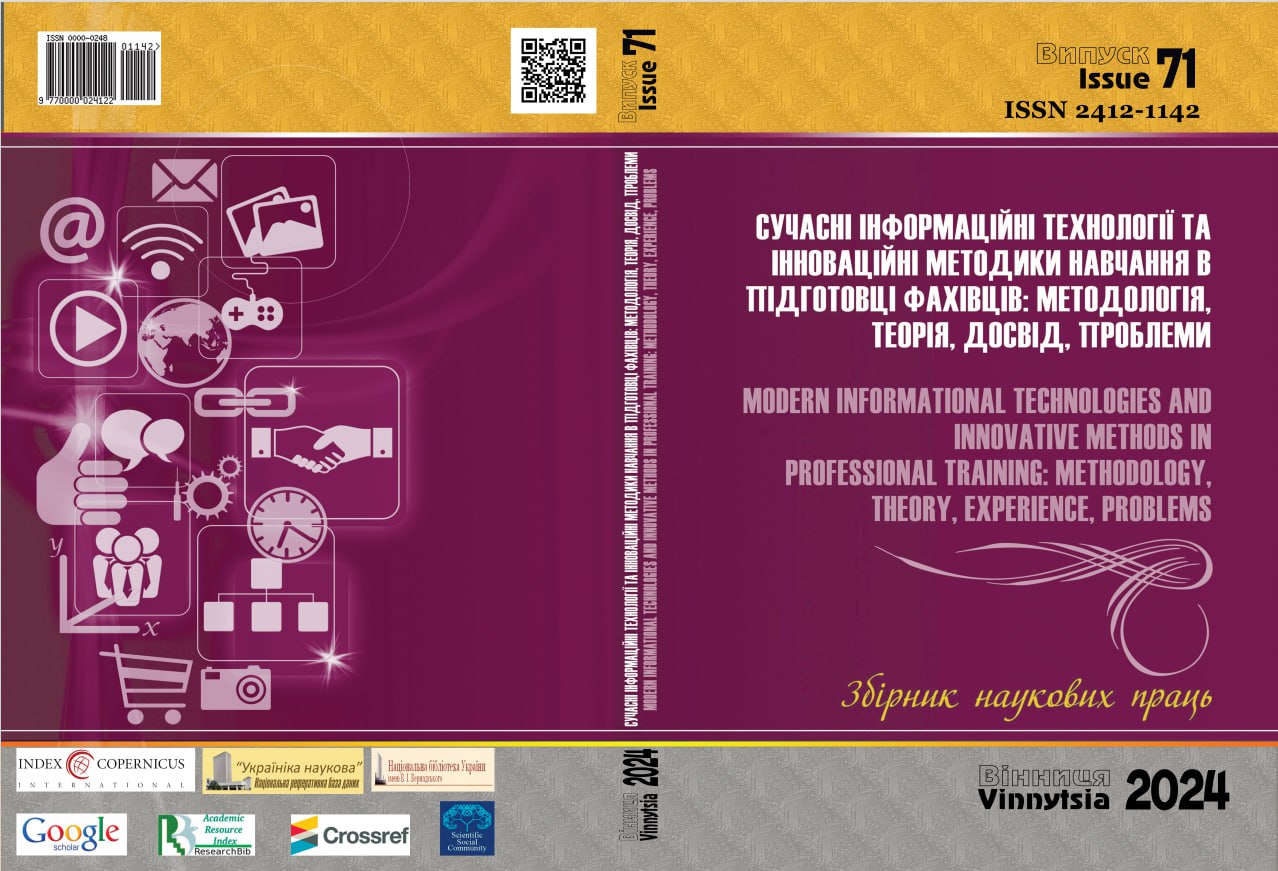CULTURE OF DRAWING IN PLANIMETRIC PROBLEMS
DOI:
https://doi.org/10.31652/Keywords:
planimetry; constructivism of problems; modeling; binary drawings; problems of calculation, proof and constructionAbstract
Today, students in grades 7-9 of secondary schools solve mainly planimetric problems to calculate the minimum level of complexity. They are practically not taught how to prove, not to mention that construction problems are a real stumbling block for yesterday's high school graduates. When taking tests in Elementary Geometry, most university freshmen are unable to solve problems from the textbooks they studied. In addition, the drawings for any proposal, whether for calculation or proof, do not stand up to any criticism. The vast majority of first-year students do not perform well. We can attest to this by referring to our own experience of communicating with students during lectures and practical classes. Therefore, in this study, we set out to demonstrate the crucial role of correct and visual, and thus highquality, modeling of figures to theorems and problems with binary images using specific planimetry propositions. Twelve examples are considered. Four calculation problems, seven proof problems, and one construction problem are solved. All the tasks are of the Olympiad level and have an increased level of difficulty. For each of the tasks, using the capabilities of the Microsoft Word text editor, color drawings are modeled in the proper style. Comments are provided on the role and place of the figure in its effective, competent use to find the optimal step-by-step path to the result. Since we are talking about geometric problems, the text describes detailed algorithms for solving each of them. The problem statement, analysis of the latest research and publications, which, by the way, are too few in our country, are presented. The purpose of the work is formulated. Finally, the conclusions and prospects for further research in Euclidean geometry are described in detail. The author emphasizes, in particular, the possible use of modern computers, ICT and other new technological teaching tools in working with both school and university students.
Downloads
References
В. Г. Кремень, & В. В. Ільїн, (2020). «Презентація візуальної грамотності в освітньому процесі та її експлуатація в культурі мислення». Інформаційні технології і засоби навчання, 75(1), 1-12. Електронний ресурс.. Доступно: https://doi.org/10.33407/itlt.v75i1.3660.
D. Hattwig, K. Bussert, A. Medaille, & J. Burgess, (2013). «Visual Literacy Standards in Higher Education: an Opportunities for Libraries and Student Learning». Libraries and the Academy, Vol. 13, No. 1 рp. 61-89.
Callow, J. (2008). Show Me: Principles for Assessing Students’ Visual Literacy. The Reading Teacher, 61(8), 616–626. Електронний ресурс.. Доступно: DOI: https://doi.org/10.1598/RT.61.8.3.
U. Boden, & L. Stenliden, (2019). Emerging Visual Literacy through Enactments by Visual Analytics and Students. Designs for Learning, 11 (1), pp. 40-50. Електронний ресурс.. Доступно: http://www.designsforlearning.nu/article/10.16993/dfl.108/.
Richard S. Palais, (1999). «The Visualization of Mathematics: Towards a Mathematical Exploratorium», Notices of the American Mathematical Society, vol. 46 (6), рр. 647–658.
M. Sturken, (2001). «Practices of Looking: An Introduction in Visual Culture». New York: Oxford University Press, 496 p.
Л. І. Белоусова, Н. В. Житенева, (2017). «Функціональний підхід до використання технологій візуалізації для інтенсифікації навчального процесу». Інформаційні технології і засоби навчання, 57(1), 38-49. Електронний ресурс.. Доступно: https://doi.org/10.33407/itlt.v57i1.1525.
Т. І. Коваль, & О. П. Бесклінська, (2020). «Використання засобів візуалізації для створення електронних освітніх ресурсів у процесі навчання математичних дисциплін у закладах вищої освіти». Інформаційні технології і засоби навчання, 77(3), 145-161. Електронний ресурс.. Доступно: https://doi.org/10.33407/itlt.v77i3.3411.
І. Г. Ленчук, М. В. Працьовитий, (2017). Роль рисунка в задачах планіметрії. Вид-во: «Педагогічна преса». Наук.-метод. журнал «Математика в рідній школі». №6. С. 26-32.
Боравльов А. П., Ленчук І. Г., (2002). Аналіз у розв’язуванні задач на побудову: Навчальний посібник для студентів математичних спеціальностей ВПНЗ. К.: Вища школа. 191 с.
I. Lenchuk, A. Prus., (2023). Graphic culture of constructive modeling of figures in metric stereometry. Mathematics and Informatics. Journal article, България, Вестник „Аз-буки“, Национално издателство за образование и наука. Vol. 66. Iss. 3. P. 281-297. Електронний ресурс.. Доступно: DOI: 10.53656/math2023- 3-6-gra.
Ленчук І. Г., (2010). Конструктивна стереометрія в задачах: Навчальний посібник для студентів математичних спеціальностей ВПНЗ. Житомир: вид-во ЖДУ ім. І Франка. 367 с.
I. G. Lenchuk & O. O. Mosiiuk, (2023). «Constructive geometry in implementations of modern 3D graphics», ITLT, vol. 94, no. 2, pp. 19–37. Електронний ресурс.. Доступно: https://doi.org/10.33407/itlt.v94i2.5157
І. Г. Ленчук & А. Й. Щехорський, (2021). «Методологія комп’ютерного моделювання перерізу піраміди у програмних середовищах», ITLT, вип. 86, вип. 6, с. 170–186. Електронний ресурс.. Доступно: https://doi.org/10.33407/itlt.v86i6.4565.
Ленчук І. Г., Працьовитий М. В., (2022). Основні метричні задачі конструктивної стереометрії. Сучасні інформаційні та інноваційні методики навчання в підготовці фахівців: методологія, теорія, досвід, проблеми: збірник наукових праць. Київ-Вінниця: Тов. «Друк плюс». Вип. 64. С. 243-257. Електронний ресурс.. Доступно: DOI: 10.31652/2412-1142-2022-64-243-257.
Погорєлов О. В. Геометрія: Планіметрія: Підруч. для 7-9 кл. серед. шк. – К.: Освіта, 1998. 224 с. іл.
Бурда М. І., Тарасенкова Н. А. Геометрія: Підруч. для 7 кл. загальноосвіт. навч. закл. – К.: Вид-чий. дім «Освіта», 2015. – 208 с.: іл.
Downloads
Published
Issue
Section
License
Copyright (c) 2024 Ленчук Іван Григорович

This work is licensed under a Creative Commons Attribution 4.0 International License.





